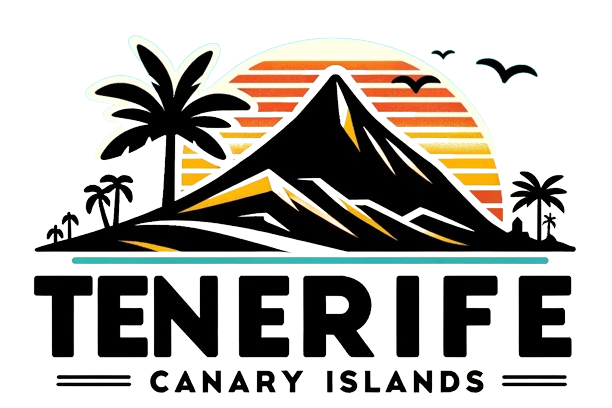The Guanches, the original people of the Canary Islands, embody a captivating chapter of isolation, adaptation, and cultural fusion that shaped Tenerife’s identity long before European arrival. These Berber-descended islanders—named “Guan Chenech” or “men of Achinet” in their Tamazight tongue—thrived in volcanic caves, herded goats across terraced slopes, and revered Mount Teide as a divine fortress. Despite conquest in 1496, their DNA, language echoes, and traditions like gofio feasts persist in modern Canarian life, with 2025 genetic studies and heritage festivals amplifying their story. From warrior menceys to mummified elites, this guide delves into Guanche origins, society, spirituality, and revival—inviting you to trace Tenerife’s roots through museums, trails, and timeless rituals.
Migration and Origins: North African Roots in Atlantic Solitude
The Guanches descended from Amazigh (Berber) populations of Northwest Africa, likely migrating to the Canaries between the 5th century BCE and 1st century CE. Roman accounts by Pliny the Elder (1st century CE) describe “Canaria” islands with ruins and dogs, hinting at early settlement; archaeological evidence points to seafaring from Morocco or Mauritania, possibly as Roman auxiliaries or independent voyagers.
Tenerife’s Guanches, one of seven island variants (with slight dialect and custom differences), arrived in small groups without navigation tools beyond stars and currents—bringing domesticated animals (goats, sheep, pigs), barley, and figs but no metals, wheels, or sails. Isolation lasted 1,500–2,000 years, fostering unique evolution: Tenerife’s population reached 15,000–30,000 by 1400 CE, divided into nine menceyatos (kingdoms) like Anaga, Tegueste, and Taoro. 2025 DNA analyses from ancient remains confirm 55–75% North African ancestry in modern Tenerifians, with haplogroups U6b1 and J1c3 linking to Atlas Berbers, underscoring a shared Mediterranean past.
Social Structure: Mencey Kingdoms, Clan Life, and Gender Equality
Guanche society was semi-nomadic and clan-based, governed by menceys (kings) elected or hereditary, advised by tagoror councils of nobles and elders—democratic assemblies where women voiced opinions. Tenerife’s nine realms varied: Peaceful alliances in the north contrasted southern rivalries, with inter-kingdom trade in obsidian tools and pottery.
Daily existence blended herding (transhumance between coasts and highlands), farming (terraced gofio fields), and fishing. Dwellings: Natural caves (like Cueva de los Guanches in La Orotava) or drystone huts; clothing from goat skins (tamarco skirts for women, short tunics for men). Gender roles were balanced—women managed harvests and rituals, men warfare; achicaxnaixo priestesses led ceremonies. Social classes included achicaxnayo (nobles), achicaxna (commoners), and captives. Games like lucha canaria wrestling and pastor’s leap (pole-vaulting) built strength; justice via duels or tagoror trials.
Population sustained by sustainable practices—no overgrazing, rotational farming—evident in Anaga’s ancient terraces.
Beliefs and Rituals: Nature Worship, Mummification, and Teide’s Sacred Role
Guanche spirituality animized the landscape: Achamán as supreme sky god, Magec (sun) for vitality, Chaxiraxi (earth mother). Teide was Echeyde, prison of Guayota the evil spirit—eruptions his attempts to escape, quelled by Achamán’s light. Sacred sites like Roque Bentayga hosted milk offerings; harimaguadas (priestesses) divined via smoke or stars.
Funerary practices distinguished elites: Mummification involved evisceration, herb-smoking, goat-skin wrapping, and cave interment—over 200 Tenerife mummies preserved, richest in Barranco de Herques. Commoners got simple burials with gofio. Silbo-like whistling communicated across ravines; pintaderas stamped bodies for protection or beauty.
These rites influenced post-conquest syncretism: Virgin of Candelaria (Chaxiraxi incarnation) and Los Finaos vigils with ancestral foods.
Warfare, Conquest, and Assimilation: The 1494–1496 Spanish Campaigns
Guanches resisted fiercely. Early contacts (1402 Normans) were peaceful, but Alonso de Lugo’s 1494 invasion sparked war. First Battle of Acentejo (1494): Guanches under Beneharo ambushed Spaniards in Orotava Valley, killing 1,000. Reprisals culminated in Second Acentejo (1495), where steel and horses prevailed despite guerrilla tactics with guanches (spears), slings, and banot lances.
By 1496, disease, starvation, and divisions led to surrender—menceys like Bencomo died in battle, others baptized (e.g., Dácil married a conqueror). Enslavement decimated numbers; survivors assimilated, birthing mestizo culture. Last holdouts in Anaga caves succumbed by 1500s.
Enduring Influence: Language, DNA, and Cultural Revival in 2025
Guanche legacy thrives:
- Language: 200+ words in Canarian Spanish (goro, baifo, jable); 2025 revival classes via Cabildo.
- DNA/Genetics: Modern Tenerifians 16–31% Guanche autosomal, per recent studies.
- Traditions: Gofio, lucha canaria, silbo gomero (UNESCO intangible); festivals reenact tagorors.
- Sites/Museums: MUNA (Santa Cruz) displays mummies (€5); Pyramids of Güímar explores theories.
2025 highlights: Anaga Guanche Trail Festival (June), DNA heritage tours, and UNESCO pushes for mummification recognition. Eco-projects restore terraces, blending past sustainability with REGENERATe.
| Menceyato | Key Mencey | Fate |
|---|---|---|
| Anaga | Beneharo | Surrendered 1496 |
| Tegueste | Tegueste | Allied early |
| Taoro | Bencomo | Died in battle |
Immersing in Guanche Heritage: Tenerife Experiences and Tips
- Museums: MUNA for artifacts; Museo Arqueológico del Puerto de la Cruz (€3).
- Trails: PR-TF 4 (Anaga) visits caves; guided menceyato hikes (€25).
- Festivals: Baja Insular (August) reenactments; Los Finaos for ritual echoes.
- Taste: Gofio at markets; tamarco workshops in La Laguna.
Tips: Respect caves—no flash photos; book permits for restricted sites. Pair with Teide hikes for spiritual context.
The Guanches aren’t vanished—they’re Tenerife’s bedrock, where ancient whispers fuel the island’s vibrant present. Honor them, and discover the Canaries’ true essence.
